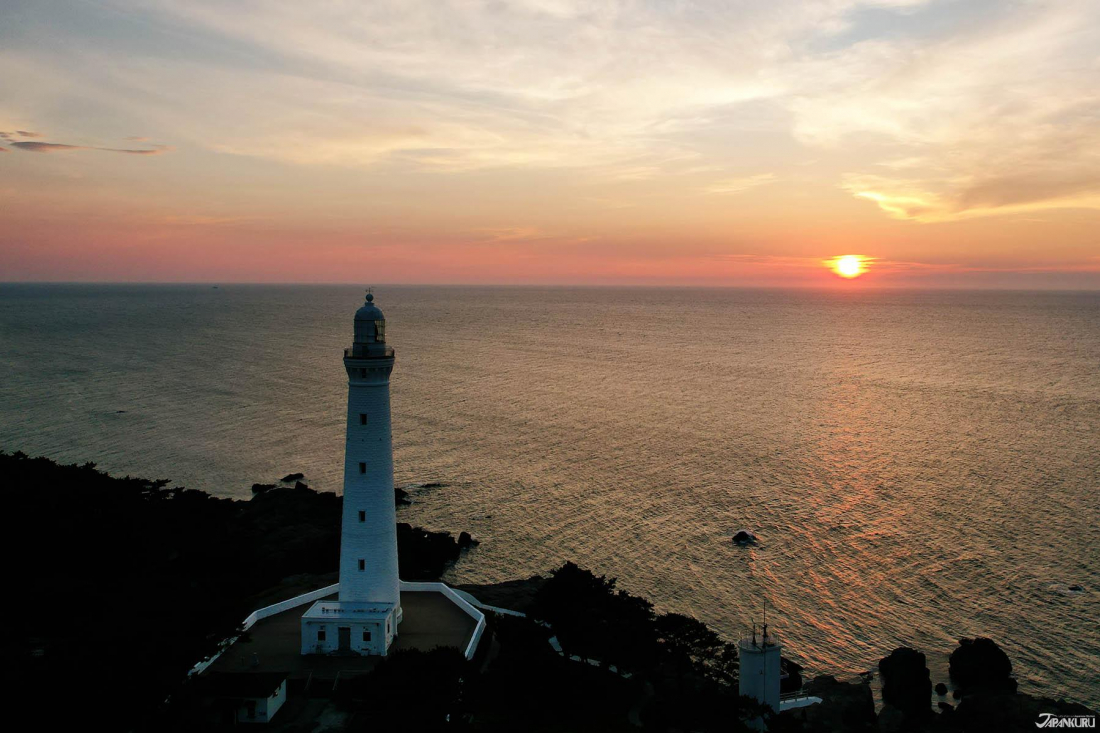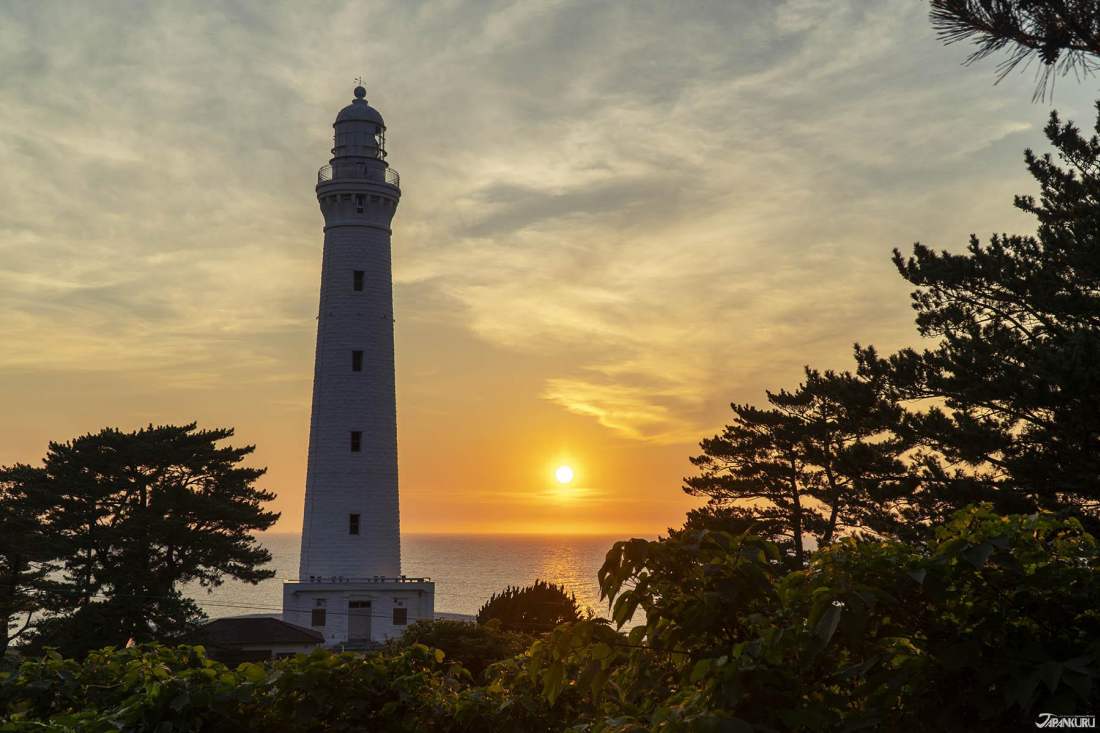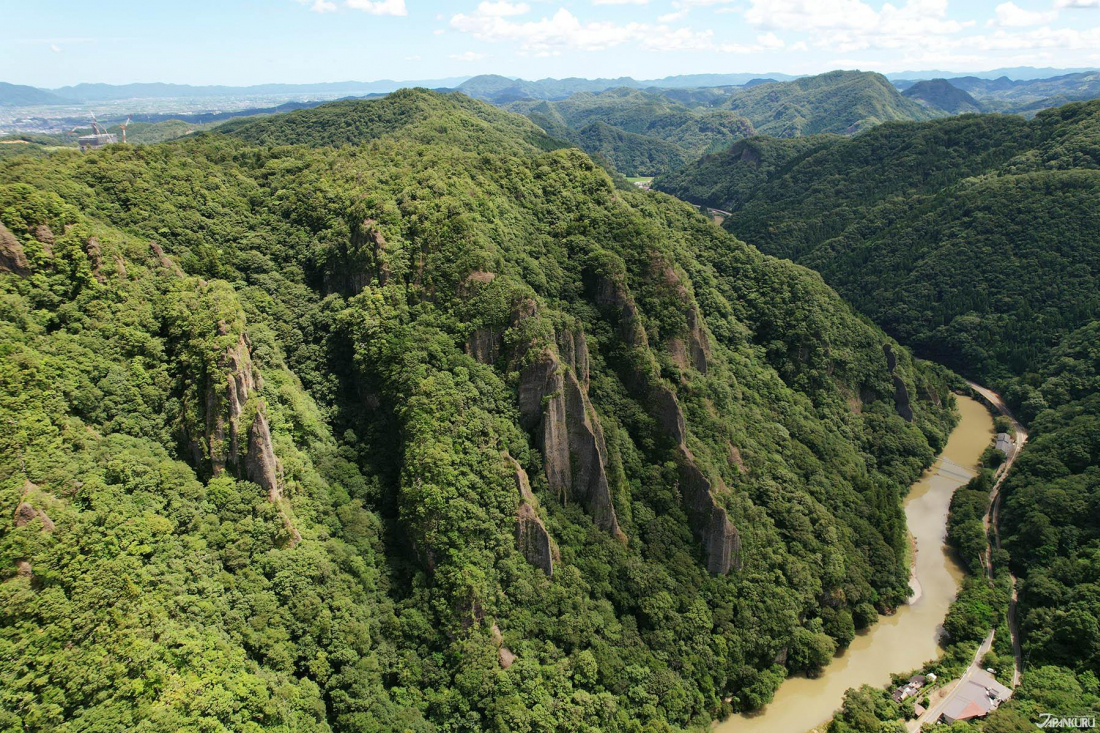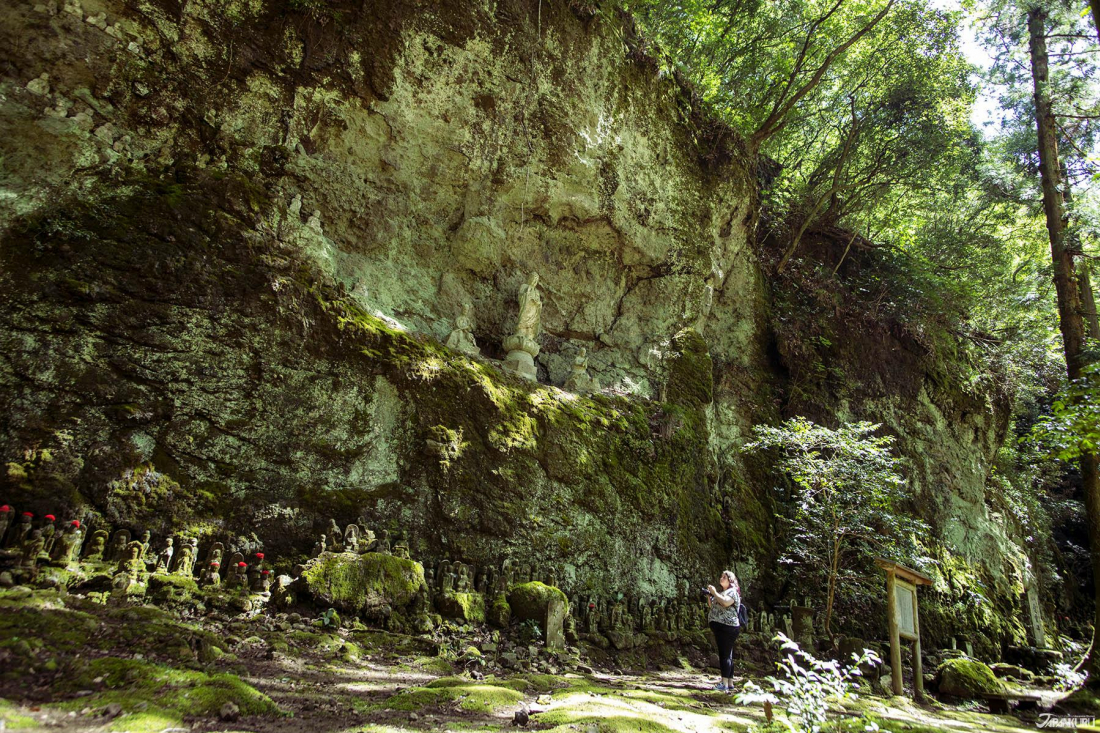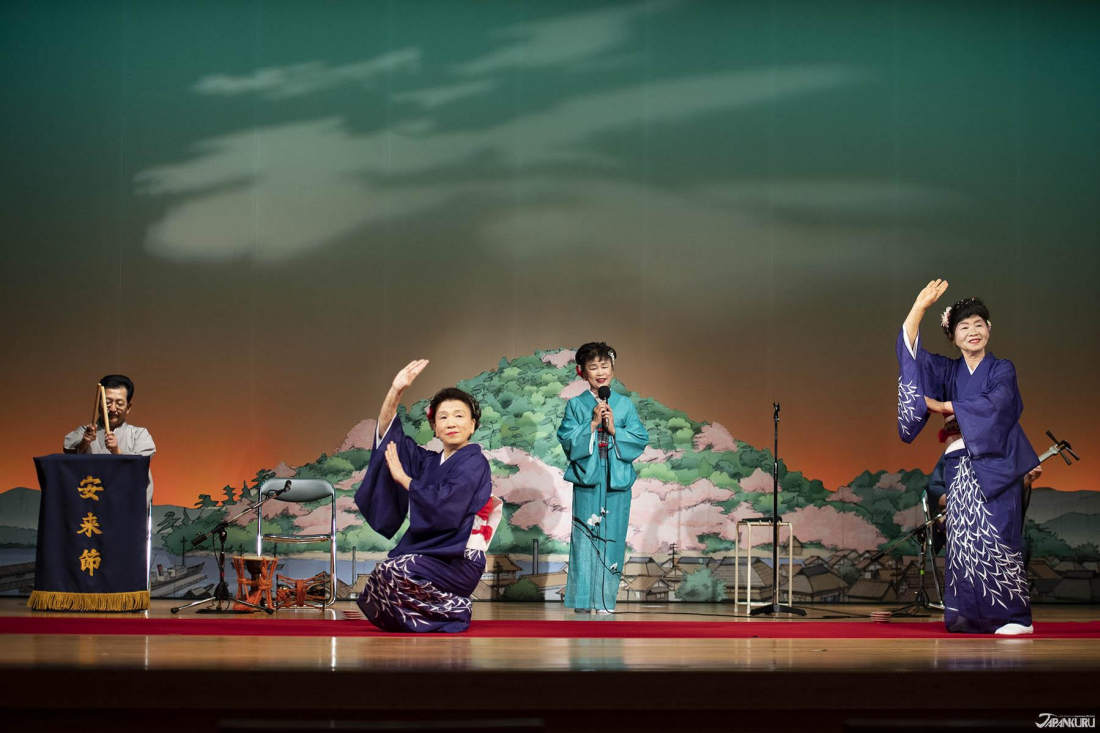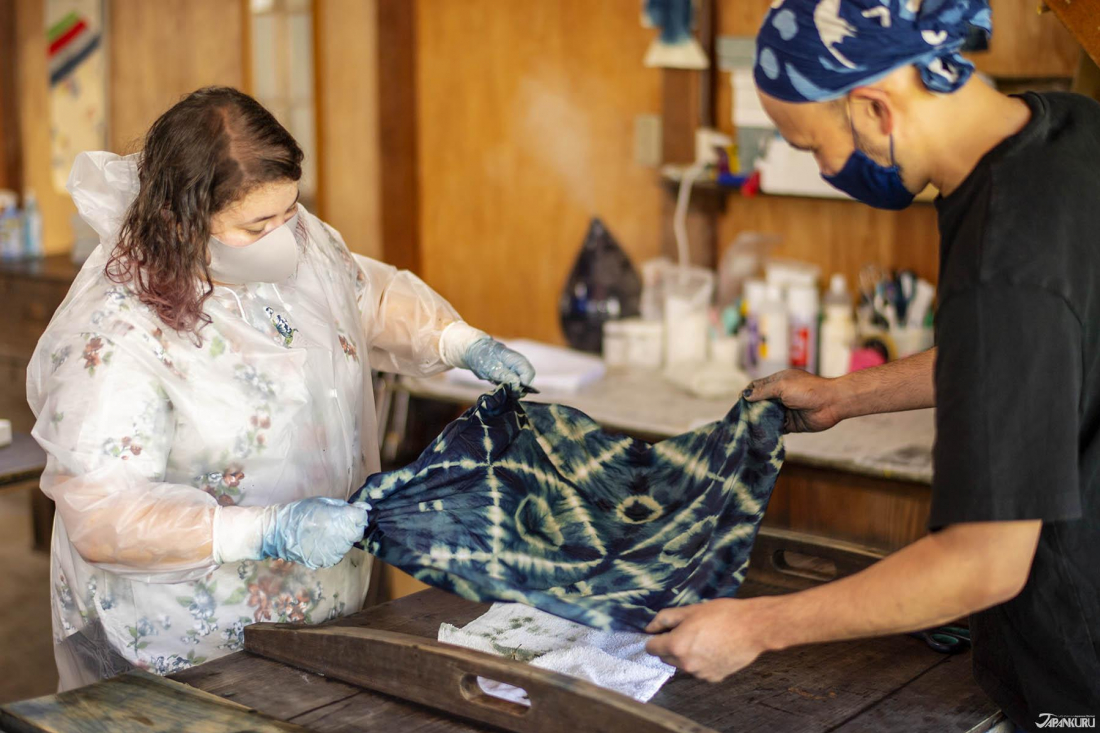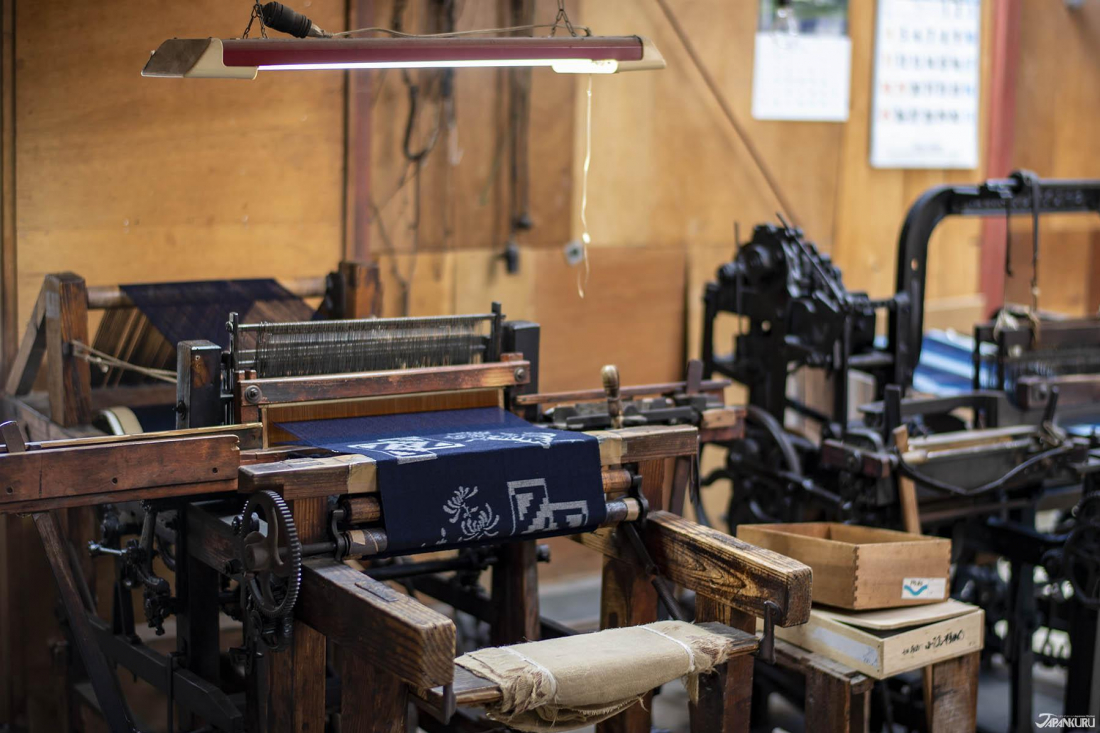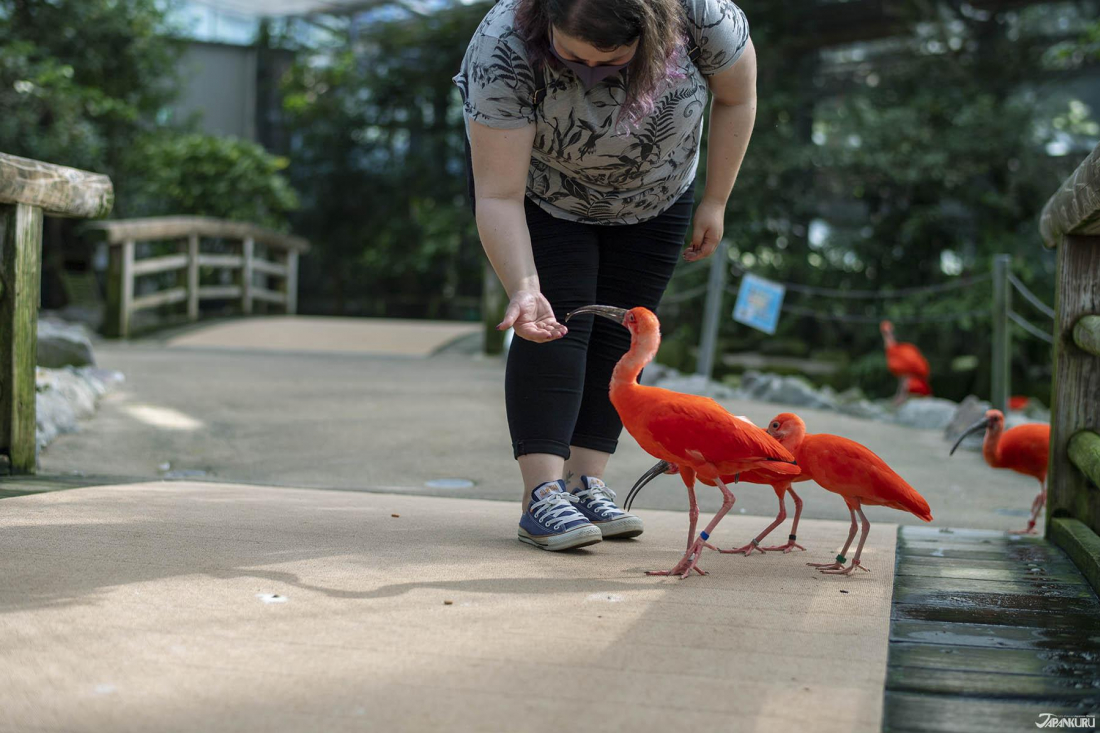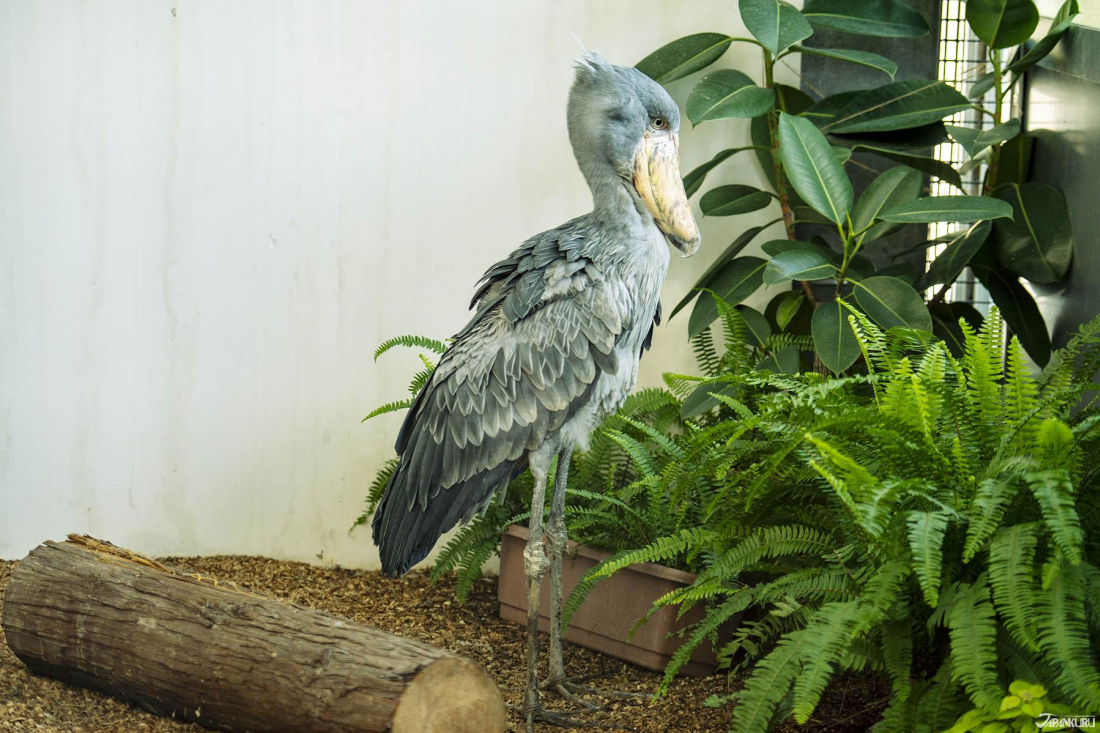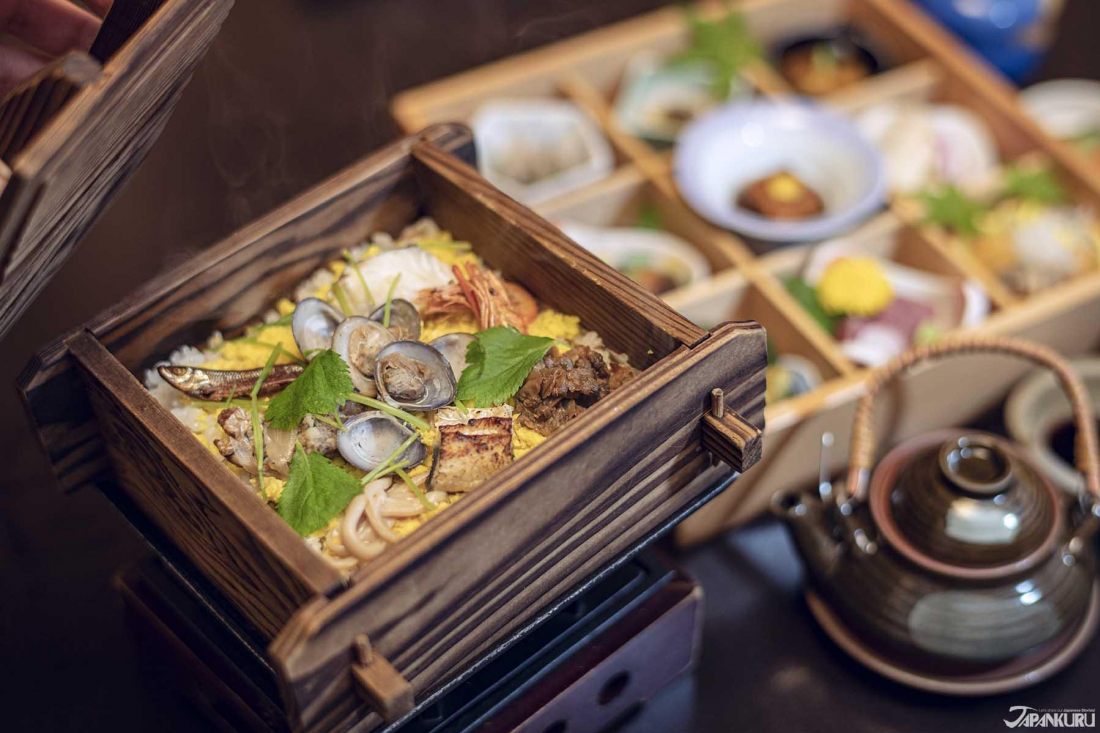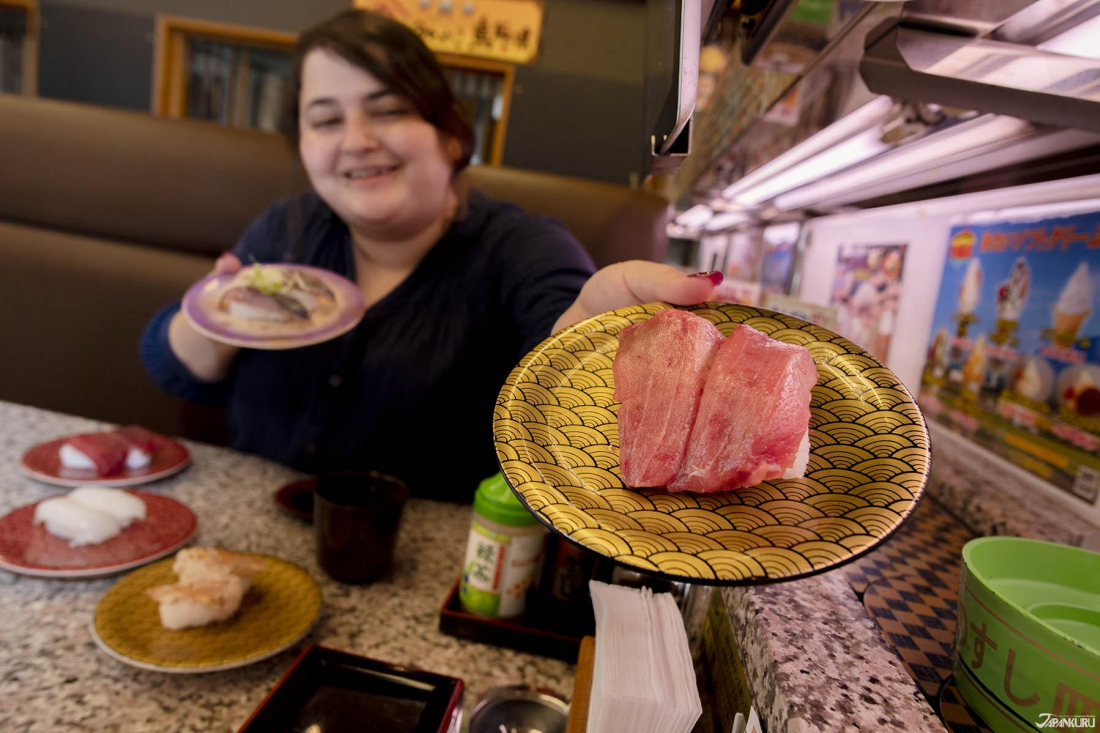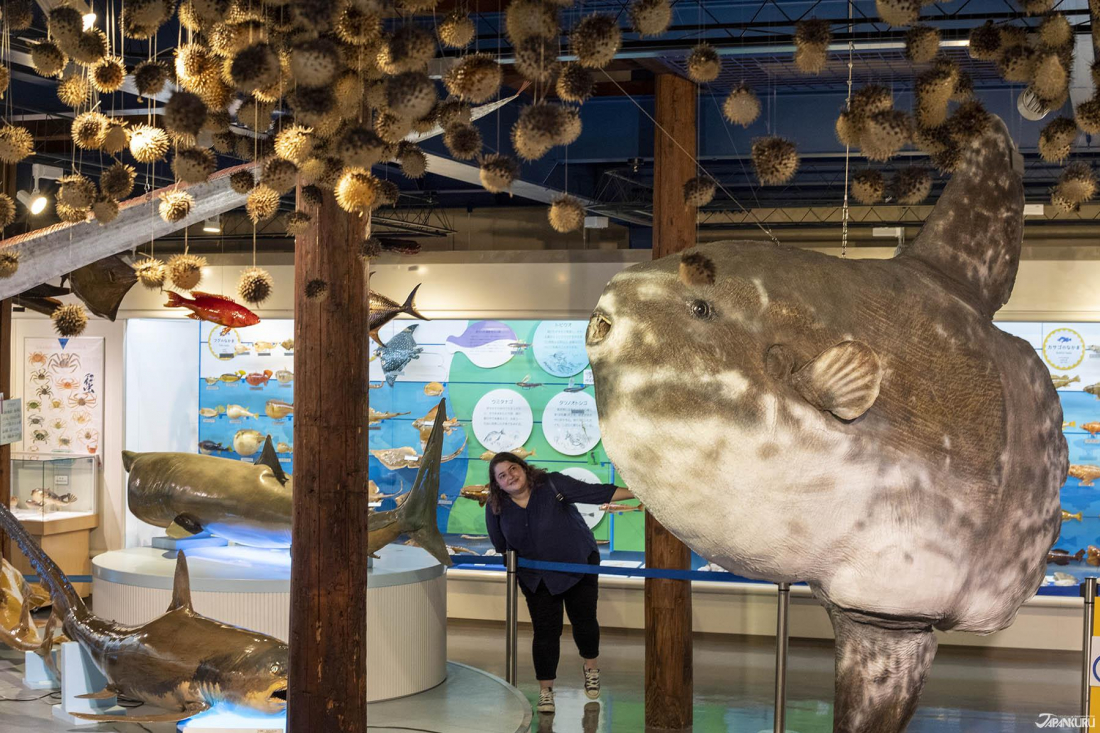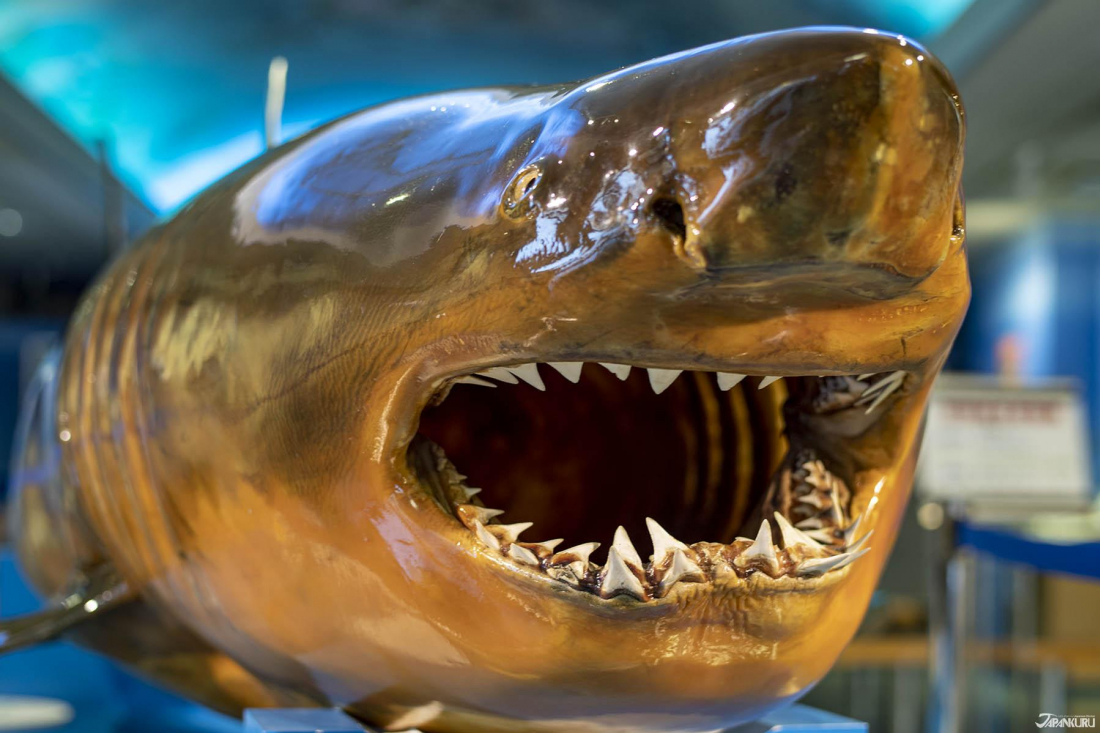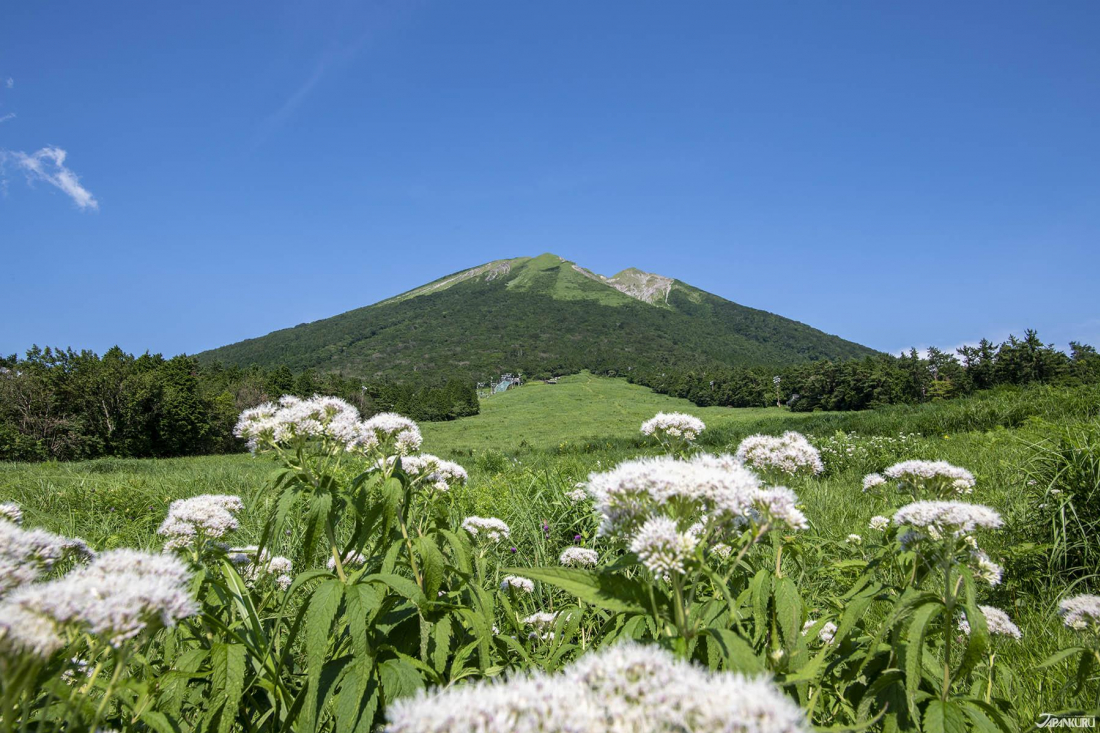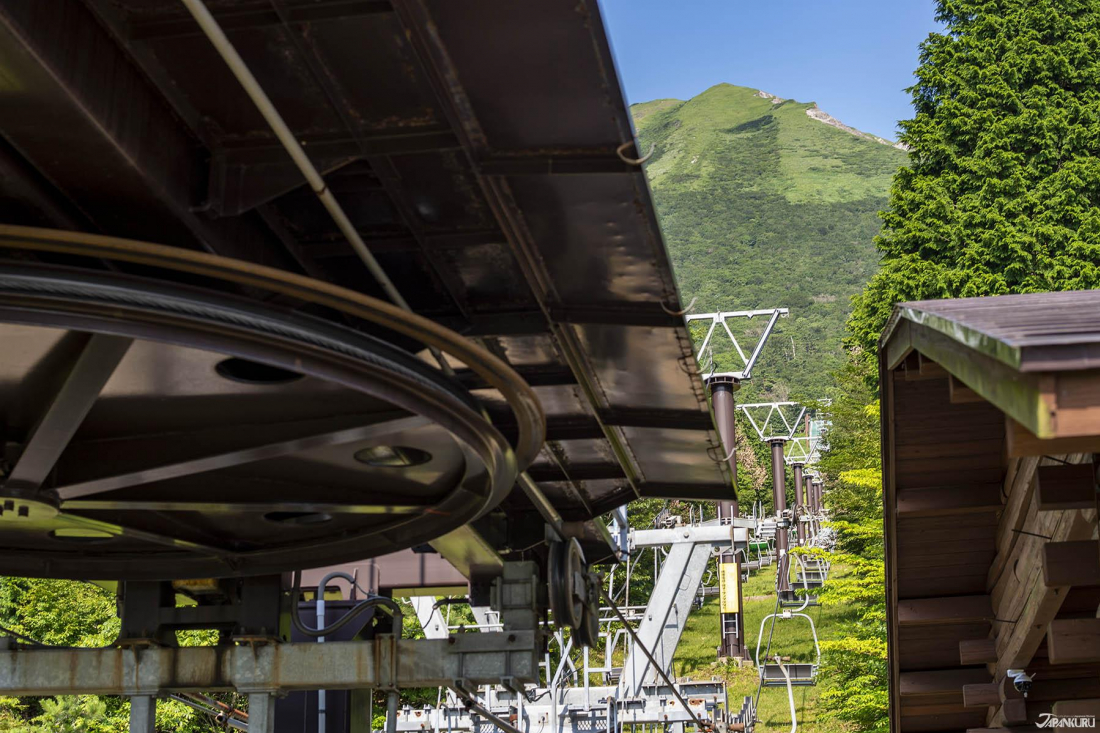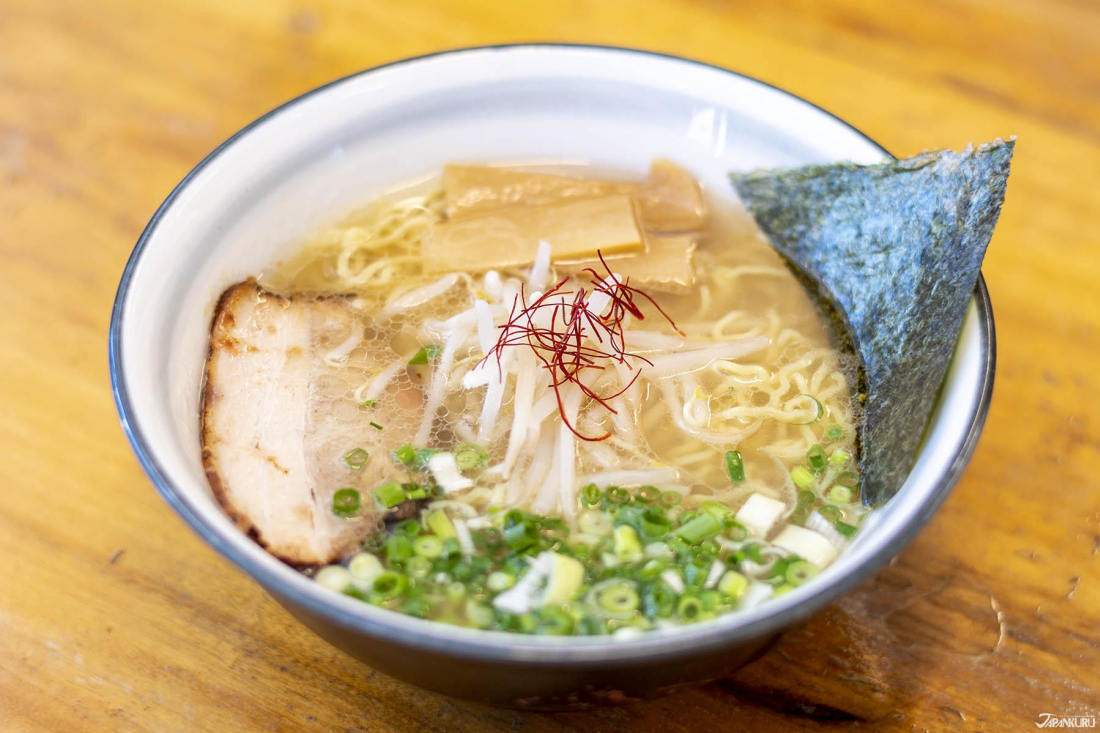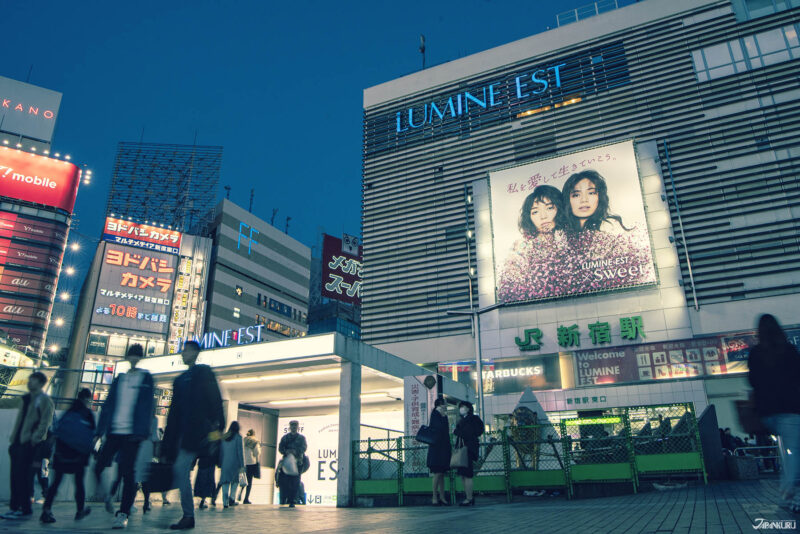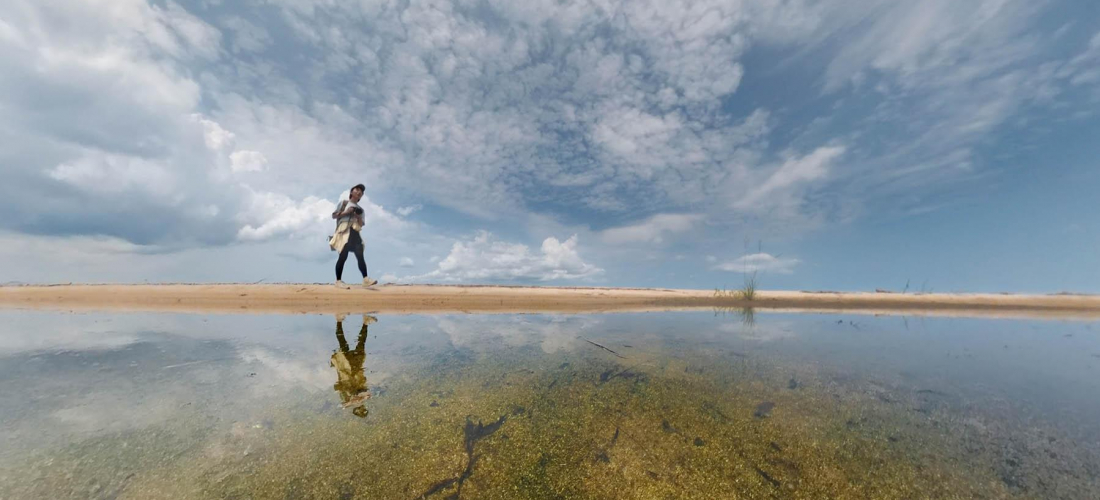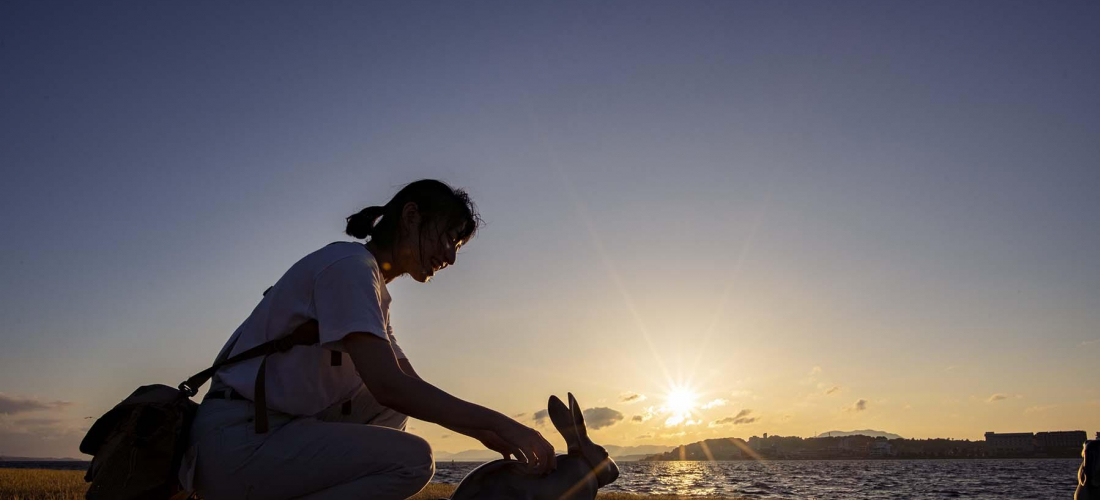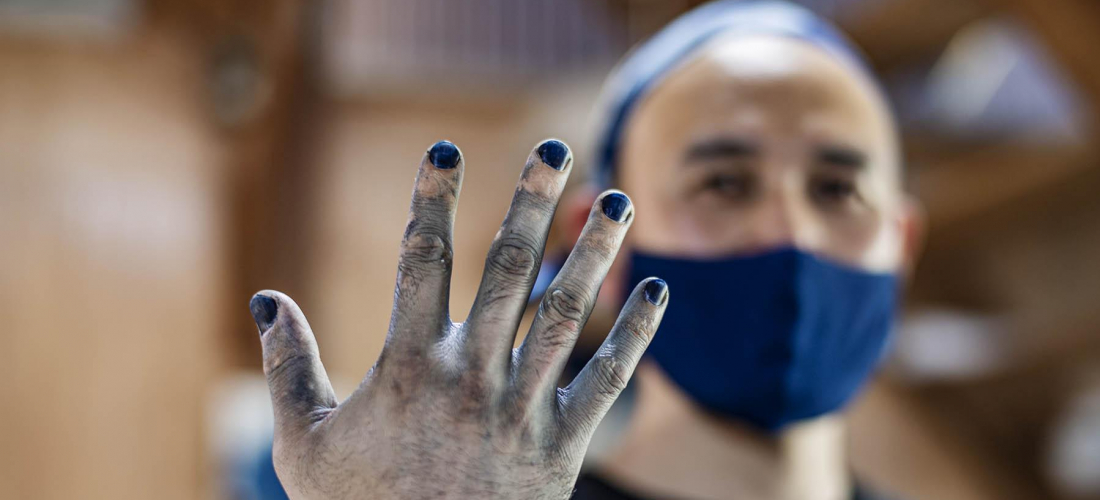
CONTENTS
Adventures at the top of green mountains and views under the blue sea, a trip to the world of the gods and a blast from the past, see it all in San’in!
The San’in Region
The San'in region is a narrow strip of land along the coast of the Sea of Japan, and at its heart are some of Japan's most precious myths and legends, connecting the people of San'in to the land itself and the gods that make Japan their home, too. For travelers, from the tall green mountains down to the seashore where Shinto gods come to gather, each city in Central San'in is like a world unto itself, with its own local charm and connections to the myth and tradition. Whether you're hoping to feast on seafood delicacies, find ancient cultural treasures and new experiences of Japanese tradition, or relax in front of a breathtaking sunset over the water, a tour through the center of the San'in region is a unique way to see the best of Japan!
Izumo, Shimane: Into the World of the Gods
Izumo Taisha Shrine
This journey starts at one of the region's most famous destinations, Izumo Taisha (出雲大社), also called the Grand Shrine of Izumo. The shrine is one of the oldest in Japan, well over a millennium old, and so ancient that it was described in the calligraphy of Japan's oldest historical records, the Kojiki and Nihon Shoki. Enshrined in the halls are Shinto gods of matchmaking and prosperity, and alongside crowds of travelers from around the world, couples often come to Izumo Taisha to pray for happiness together. Izumo isn't just home to a handful of gods, though―it's also a gathering place for all eight million gods of Japan. Japanese mythology says that all of those millions of deities come together during the 10th month of Japan's ancient calendar (modern-day November) and meet in Izumo, earning it the nickname the "Land of the Gods."
Izumo Taisha is particularly known for the enormous braided shimenawa ropes (しめ縄) that decorate the haiden (拝殿, front shrine building) and the nearby kagura-den (神楽殿), a sanctuary built for traditional dance and rituals. Each of these enormous shimenawa takes a whole year to create, with hundreds of smaller straw ropes getting bound up together to form the massive ropes that mark the boundary to the world of the gods.
At any of the shrine buildings, tradition dictates that prayers at Izumo Taisha are performed a little differently from those made at other Japanese shrines. After bowing twice, most shrines expect visitors to clap their hands twice before making their prayers. At the Grand Shrine of Izumo, visitors clap their hands four times instead, before praying and bowing one last time. Try out this traditional custom as you appeal to the shrine's gods for good fortune―or a little extra luck in the love department!
Izumo Taisha Shrine (出雲大社)
195 Taishacho Kizukihigashi, Izumo, Shimane
Hours: 8:30 – 17:00
Official Website (jp)
Hinomisaki Lighthouse
Not far from the grand shrine, Hinomisaki (日御碕, sometimes called Cape Hino) is an official Japanese Heritage site, famous particularly for the spectacular and spiritually important sunsets seen from the tall cliffs. Izumo is a "Sacred Place of Sundown" (日が沈む聖地出雲), and locals in Western Shimane have treasured sunsets since ancient times, well over a thousand years ago.
The lighthouse standing over the water was completed a little more recently in 1903, but it has become a landmark over the past century. New couples often climb the 44m (143ft) lighthouse to look out onto the water and watch the sunset on Hinomisaki, which is said to bring luck and longevity to the new relationship. Whether you're with a special someone, a friend, or even going solo, the silhouette of the lighthouse against the setting sun is an unforgettable image.
Izumo Hinomisaki Lighthouse (出雲日御碕灯台)
1478 Taishacho Hinomisaki, Izumo, Shimane
Lighthouse Admission: 300 yen
Entrance Hours: 9:00 – 16:30 (March to September weekend and holiday hours ~17:00)
Inasanohama Beach
Izumo Taisha is at the heart of ancient Japanese Shintoism, but when those gods congregate in Izumo each fall, they're actually said to meet over on nearby Inasanohama Beach (alternatively Inasa Beach, or just Inasanohama, 稲佐の浜). This sandy beach where the gods come to celebrate is below the cliffs and just along the coast from Hinomisaki. The smooth shore is accented by one enormous, towering rock called Bentenjima (弁天島), with a small Shinto shrine perched right on the edge. Travelers often come here, too, to see the evening sunset glowing on the water and creating a halo of reds and oranges behind Bentenjima.
Inasanohama Beach (稲佐の浜)
2711 Taishacho Kizukikita, Izumo, Shimane
Tachikue Gorge
Further in from the coast and nestled among the mountains that run through San'in, Tachikue Gorge (or Tachikuekyo, 立久恵峡) is known for its rough cliff faces looming over the Kando River, cracked from years of erosion and surrounded by ancient pines. Trails run along the river and through moss-carpeted enclaves that look like scenes from a Ghibli movie, past small wooden temples and up through the mountains. Those looking for a relaxed walk will find quiet paths populated by dragonflies and tiny lizards, but anyone willing to climb will be rewarded with great views from the mountaintop lookout points.
One must-see spot at Tachikue Gorge is the collection of jizo (地蔵), Buddhist statues, down by the river. In this one shady forest clearing, there are over 1,000 of the stone figures, and the groups of jizo standing in little crowds separated by mossy ground create an almost unnervingly mysterious, but simultaneously tranquil, atmosphere. Sometimes it's not so hard to see where studios like Ghibli get the ideas for their backdrops. Each of the thousand jizo has its own unique face, but be careful not to look too closely! Local legend says that if you examine each of the statues, you're sure to find one that looks just like you, and when you do, you'll be cursed with some kind of misfortune in the following three days!
Tachikue Gorge (立久恵峡)
Otsutachicho, Izumo, Shimane
Yasugi, Shimane: A Center of Japanese Arts and Artisans
Yasugi-bushi Performance Hall
Yasugi is a small city with a long history, said to be the burial ground for the goddess Izanami and an ancient center for steel manufacturing in Japan. But traditions have continued to grow and evolve in more recent centuries, leaving Yasugi with a rich cultural legacy, one part of which is "Yasugi-bushi" (安来節). Yasugi-bushi is a kind of folk entertainment, combining traditional Japanese folk songs with dance and even some comical acting. Its origins come from performances held during Japan's Edo period (1603-1868), particularly from 1694, but Yasugi-bushi came into its own during the Taisho period, a short period towards the beginning of the 20th century. That's when audiences around Japan became familiar with Yasugi-bushi's famous "Dojo Odori" (どじょう踊り), a fun and theatrical dance performance recreating the act of loach fishing.
Starting just before the Taisho period, locals in Yasugi-bushi realized both how important this piece of folk culture was to the city, and how easily it could disappear. In response, the Yasugi-bushi Preservation Committee was established to keep the tradition going, and a century later in 2006, the Yasugi-bushi Performance Hall (or Yasugi-bushi Engeikan, 安来節演芸館) was constructed as a permanent venue for Yasugi-bushi performances. Visitors can now visit the comfortable traditional theater to see lively traditional songs and dances just about any day of the year (except most Wednesdays), and outside of COVID-19 pandemic times, they even offer audience members a chance to get up on stage and join in!
Yasugi-bushi Performance Hall (安来節演芸館)
534 Furukawacho, Yasugi, Shimane
Tickets: 800 yen
Hours: 10:00 – 17:00 (~15:00 until further notice due to COVID-19)
Closed: Wed, only first Wed each month in May, Oct, & Nov
Official Website (jp)
Aizome Indigo Dyeing at Amanokouya
A much quieter cultural tradition in Yasugi is aizome (藍染め), the centuries-old Japanese method of indigo dyeing. Yasugi is one of a number of cities around Japan that has a long history of creating beautiful aizome items, and the dyeing method is still used to this day for everything from everyday clothing to intricate works of art. The Yasugi area is particularly known for using aizome to dye cotton thread before it's woven into fabric, and the local tradition of "Hirose-gasuri" (広瀬絣) involves aizome artisans carefully dyeing thread so that it later weaves up into intricate patterns, similar to ikat. As times have changed, Yasugi's traditional artisans with the skills to make hirose-gasuri have become increasingly rare, but fifth-generation craftsman Hisashi Amano and his family still maintain their workshop Amanokouya, established in 1870 and preserving the craft for a century and a half. Visitors can now come to see the artisans in action, try an aizome dyeing workshop, and find beautiful dyed pieces to bring home as well.
Amanokouya's aizome dyeing workshops let visitors get hands-on with the traditional craft, using simpler aizome techniques to dye a bandana, Japanese tenugui hand towel, or t-shirt in the deep tanks of indigo dye. The workshops are led by artisan Hisashi Amano himself, whose bright indigo-stained fingernails are just a preview of the charismatic artisan's enthusiastic teaching style. Once you choose a pattern, Amano guides you through the steps, adding explanations along the way about the importance of oxygen to vibrant color, and the good bacteria that keeps indigo dye bright. Emphasizing each dip in the dye vats, Amano counts down until the project is immersed in the dye with an excited "dobon!" sound effect, adding some extra fun for kids and adults alike.
While you're there, don't forget to catch a glimpse of Amanokouya's room full of large, old-fashioned looms, used to weave fabric with the aizome thread that's dyed across the hall. For a long time, the craftspeople who worked with aizome dye and those who wove Hirose-gasuri fabric worked separately, but as both kinds of workshops dwindled throughout the 20th century, Hisashi Amano's grandfather had to find a way to keep both parts of the process going. After the Second World War, he bought a whole room full of old looms to keep up the tradition, and now Hisashi Amano's father is an expert at using the century-old machines to weave gorgeous aizome fabric.
Amanokouya Aizome (天野紺屋)
968 Hirosecho, Hirose, Yasugi, Shimane
Aizome Workshop: 2,500 yen and up
Workshop Hours: 10:00 – 12:00, reservations from 2 people
Shop Hours: 10:00 – 18:00
Official Website (jp)
Matsue, Shimane: A Land of Lakes
Ichibata Railway Rail & Cycle
The city of Matsue is tucked between two large lakes, with Lake Shinji (or Shinjiko, 宍道湖) in the west and the brackish bay-like lake of Nakaumi (中海) in the east, and in this unique location, Matsue has long been a prosperous center of local power. Many of the city's most popular tourist attractions are situated on the eastern tip of Lake Shinji, from the historic Matsue Castle to gorgeous views of the water itself, and one of the most fun ways to explore the area is to use Ichibata Electric Railway's "Rail & Cycle" service to hop between spots on the train and then bike to each destination. Not only is the combination of train and bicycle transportation a quick and convenient way to get around town, but train passengers also get to enjoy spectacular views of the sun shining on the calm lake water.
The train actually goes all the way from Matsue Shinjiko-Onsen Station, near Matsue Castle, to Izumotaisha-mae Station in the west, circling north around Lake Shinji to arrive at the Grand Shrine of Izumo. But there's plenty to do without even leaving Matsue city limits! Passengers can rent bicycles right at Matsue Shinjiko-Onsen Station, and hop on and off the train to tour Matsue Castle, Matsue English Garden, Matsue Vogel Park, among other sightseeing destinations, plus plenty of particularly scenic stretches of lakeside paths!
Ichibata Electric Railway ・ Matsue Shinjiko-Onsen Station (一畑電車・松江しんじ湖温泉駅)
Dotecho Nakabaracho, Matsue, Shimane
Tickets:
Passenger Day Pass 1,600 yen / children 800 yen
Bicycle Tickets 320 yen / 5 for 1,000 yen
Official Website (jp)
Matsue Vogel Park
One of the most exciting and unexpected destinations along the Ichibata train line is Matsue Vogel Park, a facility that's half botanical garden, half bird park and petting zoo, and a whole dream for anyone who loves to take pictures.
Steps from Matsue Vogel Park Station, the park's entrance leads right past a row of aloofly watching owls and into a huge temperature-controlled greenhouse full of over 10,000 plants. Unlike many greenhouses, this one is actually kept comfortably cool and dry throughout the summer, because Matsue Vogel Park's flower room is mostly decorated with colorful begonias and a smattering of vibrant pink and purple fuchsias. The result is a riot of vibrant color hanging down from the ceiling, sprouting up from the floor, and arranged into special shapes to create the perfect spot for a snapshot. Many picture-takers find the giant heart-shaped wreath of pink flowers to be a particularly irresistible photo spot, but the other half of the fun at Matsue Vogel Park is the dozens of different birds!
Take the unique 140-meter ramp-style escalator up into the hills, and the roofed outdoor path guides you through a series of buildings filled with birds of all kinds. In one large room, bright orange Japanese crested ibises roam freely among the ducks and flamingos and even onto the path. The little birds look expectantly and rove through the crowds of human visitors until you give in and buy a cup of bird feed for them, which they snap up piece by piece, right out of your hand. Elsewhere in the park, the purchase of a cup of cut grapes will temporarily turn your arm into a perch for a huge toucan or an emerald-green turaco, as they quickly gobble down the special treat. Another building holds a series of varied enclosures, with birds like silver pheasants and steppe eagles, a pool of penguins and hornbills with enormous beaksーwhich the park says partially inspired Matsue Vogel Park's mascot, Pakkun. One of the park's most popular birds of all, an enormous shoebill named Fudo, also makes his home in one corner of the room, sullenly looking on as visitors pass by his enclosure.
Matsue Vogel Park holds a number of daily bird shows, weather permitting, and a regular march of the penguins (through the building), but even during calmer hours of the day, the 90 different species of bird (and a few non-bird animals as well) offer plenty to look at! With roofs throughout and restaurants for lunch, it's a great place to stop in rain or shine.
Matsue Vogel Park (松江フォーゲルパーク)
52 Ogakicho, Matsue, Shimane
Admission:
Foreign Visitors: adults 1,050 yen / children 530 yen
General Admission: adults 1,500 yen / children 750 yen
Hours:
April to September: 9:00 – 17:30
October to March: 9:00 – 17:00
Official Website (en)
Sunset on Lake Shinji
Make one last stop before returning your bike for the evening, and enjoy a gorgeous view of the sun setting over the calm waters of Lake Shinji! There are a number of go-to spots around the lake for comfortable sunset-viewing, but one of the most convenient is the Sunset Spot Terrace, where you can sit on the steps running along the water and watch as the sun sets beside little Yomega Island.
Lake Shinji Sunset Spot Terrace (宍道湖夕日)
5 Sodeshicho, Matsue, Shimane
Local Delicacies at Waraku
For a taste of what both Lake Shinji, and the salty waters of Nakaumi and the ocean beyond have to offer, traditional Japanese restaurant Waraku is a five-minute walk from Matsue Station, and there's no better place to taste local delicacies. Waraku serves subtly-flavored and umami-filled dishes utilizing a variety of traditional ingredients, and many Japanese travelers will immediately focus in on the restaurant's freshwater clams caught fresh out of Lake Shinji, just down the road. One of the best ways to try the restaurant's high-end dishes and a good sampling of local ingredients, without breaking the budget, is to head to Waraku for lunch, when their "Seven Treasures of Lake Shinji Bamboo Steamer" set offers a truly decadent meal for 3,000 yen plus tax.
Waraku (和らく)
565 Otesenbacho, Matsue, Shimane
Hours: lunch 11:30 – 15:00 / dinner 17:30 – 23:00
Official Website (jp)
Miho Shrine & Aoishi-datami Road
For a glimpse of the water on the other side of Matsue, Miho Shrine is a quiet little collection of traditional buildings quite literally across the street from a small bay on the Sea of Japan. Nestled at the center of a fishing village, it's no surprise that this shrine is dedicated to the god Ebisu, a jolly god known to carry a fishing rod and a sea bream, and grant luck to Japan's fishermen. Miho Shrine is actually the head of all 3,000 Ebisu shrines throughout Japan!
Although the main sanctuary of the shrine is an elegant wooden structure built more than 200 years ago, many visitors are especially interested in looking in the other direction, catching a view of the sparkling bay waters beyond the shrine gate. But Miho Shrine is also home to a goddess associated with music and dance, and music lovers shouldn't miss Miho Shrine's collection of historical Japanese instruments, or the huge taiko drums beaten during the shrine's daily Shinto rituals!
Running perpendicular to the shrine is Aoishi-datami Road, a traditional little alley that looks like a scene from a historical film. The narrow road winds through a quaint assortment of modern and historical buildings, and makes a perfect place for a relaxed stroll (or a fun photoshoot while clad in kimono)! The road's name comes from the stone pavement underfoot, made of smooth grey stones that turn a lovely melancholy blue on rainy days.
Miho Shrine & Aoishi-datami Road (美保神社 & 青石畳通り)
608 Mihonosekicho Mihonoseki, Matsue, Shimane
Official Website (jp)
Rollercoaster Bridge (Eshima Ohashi)
Matsue's Nakaumi area connects the city to a series of islands and then over to the city of Sakaiminato, in neighboring Tottori Prefecture. But before you make it over the water you might have to face your fears on Matsue's "Rollercoaster Bridge"! Officially named Eshima Ohashi Bridge (江島大橋), photos of this bridge have gone viral a number of times thanks to an optical illusion that makes it look like Eshima Ohashi Bridge goes almost vertically into the air. Every trip on this bridge is like a terrifying rollercoaster ride!
Or so Japan's netizens might like you to think! The truth is, the incline is a little steep, but it's nothing unusual. Driving across the bridge is really quite mundane, but if you find the perfect spot 3 km away across the water, you too can take one shocking snapshot! We recommend using a good zoom lens, if you have one.
Eshima Ohashi Bridge (江島大橋)
Between Matsue, Shimane Prefecture and Sakaiminato, Tottori Prefecture
(Japankuru's favorite photoshoot spot.)
Yuushien Garden
On that same island in the middle of Nakaumi with a great view of Rollercoaster Bridge, you'll also find a particularly beautiful Japanese garden called Yuushien, spread out over 40,000m² (430556ft²), and dotted with different areas inspired by nearby Izumo's many landscapes, all arranged around a garden pond. Yuushien is particularly famous for its peonies, which are grown indoors all year round, and are then turned into magical floating peony gardens resting on the water each spring. But each season holds its own charm at Yuushien. In summer, sprays of mist add an air of mystery to the green garden, in fall the leaves turn beautiful shades of yellow and orange, and in winter the grounds are lit up with a variety of colored light displays for a magical experience after sunset. A trip around the garden ends at the garden's spacious cafe with a fabulous view of the garden pond, making it a great place to relax after a stroll along the winding paths.
Yuushien Garden (由志園)
1260-2 Yatsukacho Hanyu, Matsue, Shimane
Admission: adults 800 yen / children 400 yen*
Hours: 9:00 – 17:00*
*Hours and admission prices subject to change throughout the year.
Official Website (en)
Sakaiminato, Tottori: A World Under the Waves
Tairyoumaru Conveyor Belt Sushi
Crossing the bridge over to Tottori, we find Sakaiminato, a small city almost enveloped by the Sea of Japan and Nakaumi, that has whole-heartedly embraced its history as a seaside port. While classic manga fans often visit Sakaiminato to see Mizuki Shigeru Road, dedicated to the author of monstrous manga Gegege no Kitaro, the city is also surrounded by water on three sides. There's no one point in Sakaiminato more than about 2km (~1.5 miles) away from the sea, river, or lake. It's a great place to immerse yourself in the waterlogged life of a fisherman, and the best way to do that is to try fresh seafood caught locally and brought to shore each morning―at Tairyoumaru, that fresh seafood is delivered via conveyor belt!
Tairyoumaru is a local conveyor belt sushi joint with two locations, serving Sakaiminato favorites fresh from the harbor, like cuts of toro (fatty tuna) and nodoguro (rosy seabass or blackthroat seaperch), all atop fresh sushi riceーalso grown locally, of course. Grabbing the most delicious-looking plates off the conveyor belt is probably the most exciting way to eat, but for when there's a particular fish you're hoping to try, the restaurant caters to travelers by offering touchscreen menus with a number of language options aside from Japanese: English, Korean, Chinese, French, and even Russian! All it takes is a couple of taps, and you'll find a treasure trove of fresh sushi arriving at your table!
Tairyoumaru Sakaiminato Shop (大漁丸 境港店)
280-1 Takenouchidanchi, Sakaiminato, Tottori
Hours: 11:00 – 21:00
Official Website (jp)
The Museum of Sea and Life
For a look at what's going on deep in the seas off the coast of San'in (before any of it hits your dinner plate), Sakaiminato's Museum of Sea and Life offers a unique way to see the local marine life. Built inside a picturesque sake brewery building from the Meiji period (1868-1912), the museum focuses on marine life and fishing, and the collection contains 4,000 beautifully taxidermied specimens of 700 different species, including fish, crustaceans, and all kinds of other underwater life forms. Fish are notoriously difficult to taxidermy, but the creatures at the Museum of Sea and Life are masterpieces created by Japanese specialist Masayuki Tane, an expert at preserving the beauty and vitality of life under the sea.
Some of the biggest animals in the museum are fan favorites, like the great white shark nicknamed "Hojiro," an enormous 275cm (9ft) sunfish that's almost bigger than you could imagine, and a shimmering silver oarfish that reminds us all why the people of the past once believed in sea serpents and mystical monsters of the deep. The colorful displays of smaller fish are equally fun to look at, too, and the tunnel crowded with spikey palm-sized pufferfish hanging from the ceiling is a unique and surprisingly Instagrammable spot for those who love to take pictures! With admission discounted to just 100 yen for foreign visitors, the Museum of Sea and Life is a must-see for travelers passing through Sakaiminato.
Museum of Sea and Life (海とくらしの史料館)
8-1 Hanamachi, Sakaiminato, Tottori
Admission:
Foreign Visitors: 100 yen
General Admission: adults 410 yen / children 100 yen
Hours: 9:30 – 17:00
Official Website (jp)
Yonago, Tottori & Mount Daisen: A Pastoral Paradise
Mount Daisen’s Masumizu Highland
Our move from the sea-swept city of Sakaiminato to its neighbor Yonago takes us up high into the mountains, for a look at Tottori's famous Mount Daisen. Daisen's volcanic peak is the highest in the region, but a little further down the mountain on the Masumizu Highland (or Masumizu Kogen, 桝水高原), the area's grassy green vistas look like a summery scene from the Swiss Alps. Nearby fields are populated with spotted Holstein cows, and the Masumizu Highland area even keeps a little white goat, who munches happily on the verdant grass.
Local legend tells of a young woman living nearby back when this region was known as the Hoki Province, who fell in love with a fisherman from the Oki Islands, far north in the Sea of Japan. The story tells us that the couple persevered through adversity together, and stayed in love despite strong opposition from their parents, and the extreme distance between their homes. Now, looking out at the distant Oki Islands from high on Mount Daisen, it's a reminder of the power of love to bring us together from afar. During the summer, Masumizu Highland's Tenku Lift chairlift is especially popular with couples (particularly the seats decorated with pink and red hearts), and the lookout point at the top is an officially designated "Lover's Sanctuary."
Mount Daisen: Masumizu Highland & Tenku Lift (大山の桝水高原・天空リフト)
Masumizukogen-1069-50 Ouchi, Hoki, Saihaku District, Tottori
Lift Tickets: adults 1,000 yen / children 700 yen
Hours: 9:00 – 17:00 ("Romantic Night" Events ~20:00)
Official Website (en)
Gyukotsu Beef Bone Ramen at Menya Muso
With so many happy cows living nearby, perhaps it's no surprise that even Yonago's local ramen uses beef! The local specialty in this city is gyukotsu ramen (牛骨ラーメン), which uses beef bones to give the broth a deep, meaty flavor. For a delicious taste of this Yonago dish, one popular destination is Menya Muso (麵屋無双), a stone's throw from the coast on the Sea of Japan. In terms of presentation, Muso keeps their ramen looking classic, and uses traditional toppings like nori seaweed, menma bamboo, and simple chashu pork. Ask the chef, and he'll tell you that while he wants the ramen served at Muso to look like the classic ramen found in his favorite childhood memories, the flavor of the broth is a level up from the simple bowls he remembers! Muso uses beef bones and tendons, including the Achilles, to add umami and depth, cooking them in the broth long enough to draw out the flavor, without breaking down the bones so much that they turn the liquid cloudy. The result is a clear, light, but also beefy soup, and a perfect complement to the chewy bite of the ramen noodles.
Menya Muso (麵屋無双)
6-3-3 Shinkai, Yonago, Tottori
Hours: 11:00 – 15:00 / 17:00 – 22:00
Official Facebook Page
Kaike Onsen at Yugetsu Ryokan
The seaside neighborhood that surrounds Menya Muso is actually known for one other local specialty, too, and that's onsen! The local hot spring is known as Kaike Onsen, and it's particularly popular due to the many places the water springs up right next to the seashore. Yugetsu Ryokan, a local seaside/onsen resort, even offers indoor and outdoor onsen baths with a spectacular view right out onto the ocean! An infinity pool hot spring bath at the beach is just a whole new level of luxury.
The natural spring water at Kaike Onsen is particularly hot, and rich with sodium and calcium, so not only is it said to be helpful for chronic pain, but onsen experts also say it's good for the skin. Perhaps a morning dip in the baths is the perfect way to brighten up the skin before showing it off on the beach below, and a nighttime soak is undoubtedly a great way erase the fatigue of a long day playing in the surf. As the last stop on our adventure through the San'in Region, Kaike Onsen is the perfect place to relax after a long trip.
Yugetsu (游月)
3-11-1 Kaikeonsen, Yonago, Tottori
Official Website (jp)
Traveling Through the Heart of San’in
Gourmet treats, spectacular natural vistas, unique cultural experiences, and a deep connection to Japan's oldest traditions, plus so much more―the San'in Region has so much to offer a traveler in search of Japan's most amazing destinations. The real question is where to start! From Izumo's famous shrine to the aizome artisans and Yasugi-bushi performers of Yasugi, the colorful birds and Rollercoaster Bridge of Matsue, or the deep-sea creatures of Sakaiminato, plus of course the Mount Daisen highlands and the seaside hot springs of Yonago, there's so much to see, San'in is your oyster! (Or perhaps your freshwater clam.)
For more info and updates from Japan, check Japankuru for new articles, and don't forget to follow us on Twitter, Instagram, and Facebook!
PROFILE
Follow us @Japankuru on Facebook, Instagram, and Twitter!
COMMENT
FEATURED MEDIA
VIEW MORE
・The new Tokyo flagship for Volcom Japan is a center for all things skateboarding, street fashion, art, and culture, all in the heart of Shibuya! ・Volcom日本旗艦店東京澀谷登場 本格派滑板街頭潮流藝文新據點 #Volcom #japankuru #shibuya #日本購物 #日本潮流 #日本街頭時尚 #澀谷 #東京購物 #東京購物推薦 #東京潮店 #澀谷潮店 #滑板 #雪板 #衝浪 #볼컴 #시부야

Which snacks make the best Japanese souvenirs?~ Jaga Pirika ~ 일본과자 선물 뭐하지?~자가피리카 편~ #pr #calbee #jagapokkuru #japanesesnacks #japanesefood #japanesesouvenir #japantravel #japantrip #naritaairport #hokkaido #나리타국제공항 #일본여행선물 #흔하지않은기념품 #일본쇼핑리스트 #일본과자추천 #고구마과자 #일본간식추천 #일본면세점쇼핑 #개별포장 #일본감자칩 #도쿄나리타공항면세점 #현지인추천 #일본여행 #일본기념품리스트 #자가포쿠루 #자가피리카

Asakusa's Sanja Matsuri, one of the biggest festivals in all of Tokyo, is almost here! Make sure you check out the festival route so you don't miss all the festivities this May. #asakusa #sanjafestival #sanjamatsuri #asakusashrine #sensoji #sensojitemple #japanesefestival #shintoshrine #japaneseculture #tokyo #tokyotrip #tokyotravel #asakusasightseeing #matsuri #japantrip #japantravel #springinjapan #tokyotravel #japankuru #산자마츠리 #아사쿠사 #일본마츠리 #일본여행 #일본5월

Odaiba's DiverCity Tokyo Plaza is home to the famous real-size 20m-tall Unicorn Gundam, and the popular shopping center has even more Gundam on the inside! Check out the Gundam Base Tokyo on the 7th floor for shelves upon shelves of Gunpla, and the Gundam Base Tokyo Annex on the 2nd floor for cool anime merchandise. Both shops have tons of limited-edition items! #pr #odaiba #tokyo #tokyotrip #japantrip #japantravel #PR #divercity #divercitytokyoplaza #tokyoshopping #gundam #unicorngundam #gundambasetokyo #anime #otaku #gunpla #japankuru #오다이바 #다이바시티도쿄 #오다이바건담 #건담 #일본건담 #건프라 #건담베이스도쿄

Evangelion, in miniature!? Tokyo's SMALL WORLDS Miniature Museum is actually a must-see for anime lovers, thanks to the tiny Evangelion Hangar and Tokyo-III... plus a whole universe of other scenes both real and fictional. #smallworlds #smallworldstokyo #tokyotrip #tokyotravel #evangelion #eva #anime #miniature #miniatures #animefigure #japantrip #japantravel #에반게리온 #스몰월드 #에반겔리온 #スモールワールズ #오다이바 #아리아케

Have you sat down for a snack at Sumida Aquarium yet? This aquarium next to Tokyo Skytree is known for its penguins and garden eels, but we can't get enough of their cute snacks! There are lots of good seats around the aquarium, too, so it almost feels like one big cafe. 🐧 • Find out more at Japankuru.com! (Link in bio.) • #japankuru #sumidaaquarium #skytree #tokyoskytree #solamachi #sumida #tokyo #tokyotrip #tokyotravel #aquarium #japanesesweets #themecafe #すみだ水族館 #Japan #日本 #일본 #Japon #ญี่ปุ่น #Japão #япония #japantravel #日本旅行 #日本旅遊 #japan_of_insta #japantrip #traveljapan #japan🇯🇵 #igerstokyo #explorejapan

For anime fans, the Evangelion areas at Small Worlds Miniature Museum are a must see! The tiny miniature people in the Evangelion Hangar look like ants beneath the moving Unit-01, Unit-00, and Unit-02! And over in Tokyo-III, characters like Shinji, Rei, and Katsuragi live life on a miniature scale. #odaiba #tokyo #tokyotrip #japantrip #japantravel #ariake #smallworlds #miniaturemuseum #smallworldstokyo #tokyotravel #evangelion #eva #anime #miniature #miniatures #animefigure #japankuru #스몰월드 #에반게리온 #오다이바 #오다이바관광 #오다이바스몰월드 #미니어쳐

